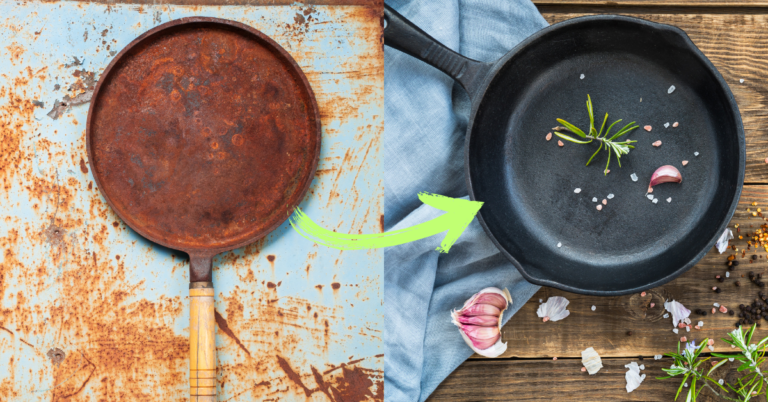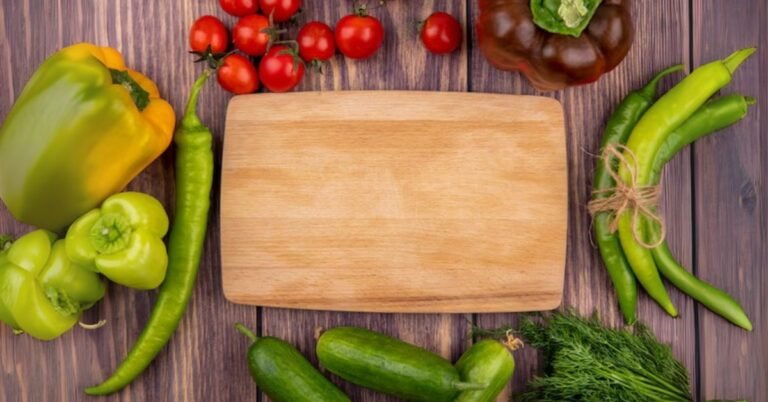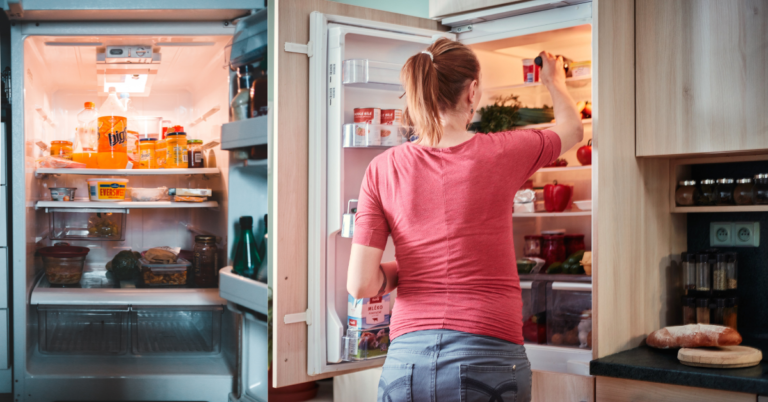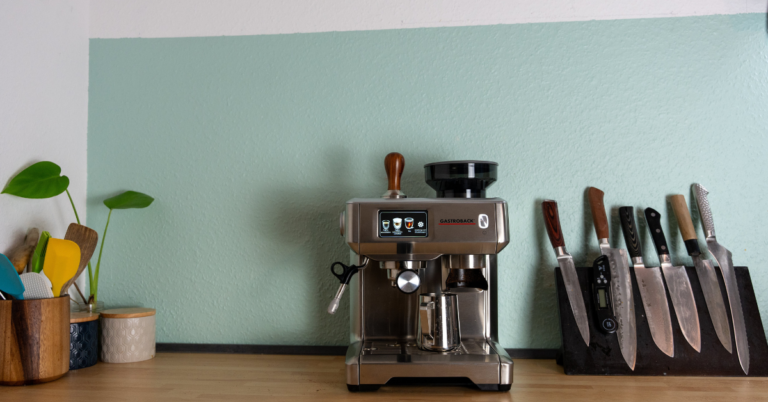Japanese Knives vs. German Knives…Which is Best for Your Kitchen?
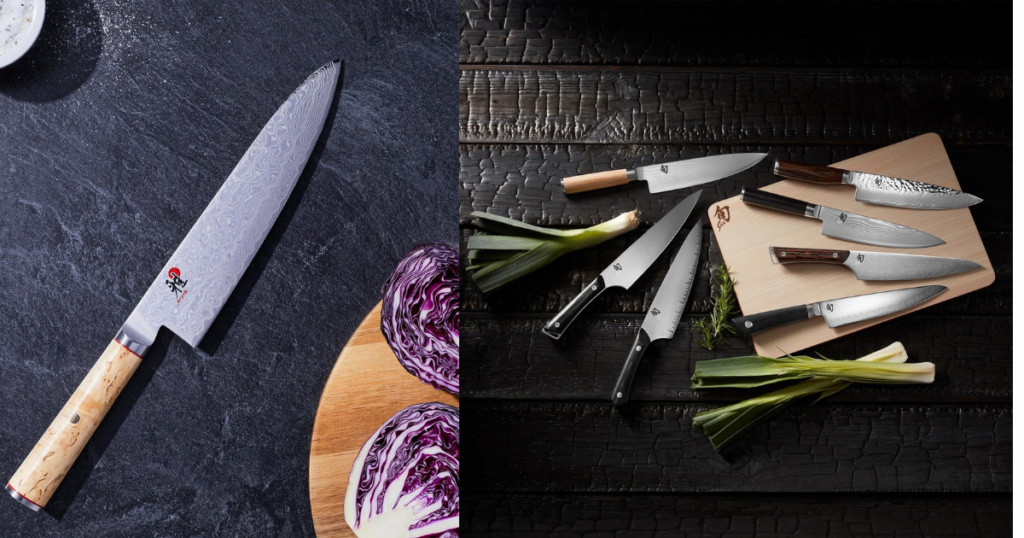
You grab your knife, start chopping… and halfway through, your wrist aches, the blade sticks, and your cuts are uneven. Maybe it’s not your skill. Perhaps it’s your knife. That’s where chefs debate the performance of two of the best knives in the market: Japanese knives vs. German knives.
This guide breaks down how each style handles, lasts, and feels … so you can finally choose the chef’s knife that actually makes cooking easier.
The Core Difference Between Japanese and German Knives Explained
Both Japanese and German knives are made with pride, precision, and centuries of tradition. But they serve two different cooking philosophies. Japanese blades are renowned for their fine control and razor-sharp precision.
German knives, on the other hand, are built for strength, resilience, and everyday versatility. Knowing these differences helps you choose the knife that genuinely matches your cooking style.
Blade Design and Steel Composition
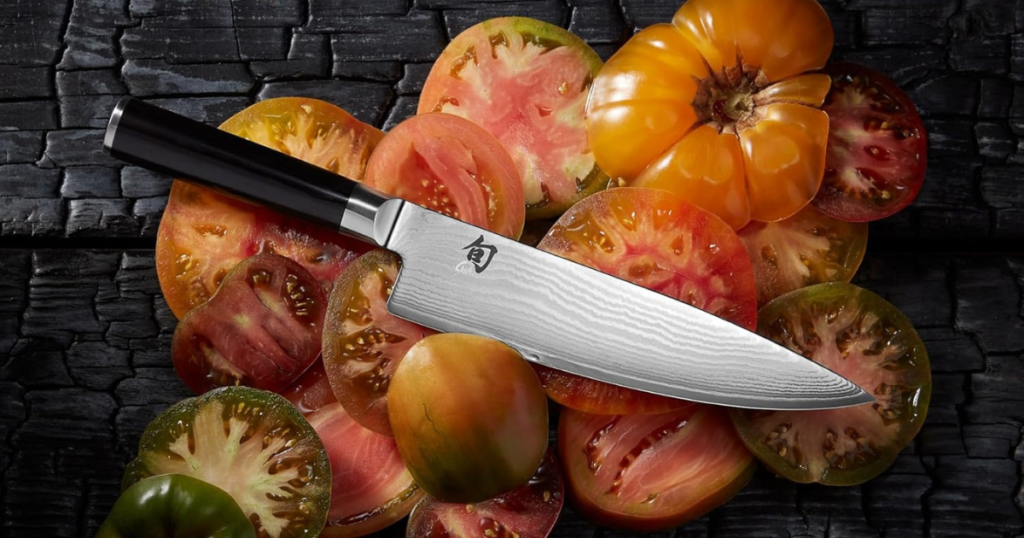
When it comes to Japanese knives vs German knives, Japanese are forged from harder steels (such as VG-10 or SG2), allowing for sharper, thinner edges. This makes them perfect for clean, delicate cuts. But harder steel can chip if used carelessly.
German knives are made from slightly softer stainless steel, which makes them more durable and easier to maintain. They can handle bones, thick vegetables, and heavy-duty chopping without worry.
The Miyabi Birchwood SG2 and Shun Classic 8” Chef’s Knife show the Japanese focus on sharpness, while the Wüsthof Classic Ikon 8” Chef’s Knife represents German toughness.
Edge Angle and Sharpness
Japanese knives typically feature a 15° edge, creating an ultra-sharp, slicing precision. German knives sit around 20–22°, prioritizing durability over delicacy.
If you enjoy clean, effortless cuts …Japanese edges shine. For daily prep that includes tougher ingredients, the German edge holds up better.
Weight and Balance
Japanese knives are lighter, thinner, and more front-balanced. This makes them ideal for fast, controlled slicing.
German knives are heavier, with a thicker spine, providing a solid, balanced feel that’s ideal for power cuts and extended prep sessions.
Cutting Technique Compatibility
Japanese knives are suitable for push-cutting. If you need to slice for sushi and sashimi finely, a Japanese knife is your buddy.
German knives are made for the rocking motion, commonly used in Western cooking styles.
Both are excellent. Your choice depends on how your hands naturally move in the kitchen.
Japanese Vs German Knives Kitchen Performance (Which Style Fits You Best)
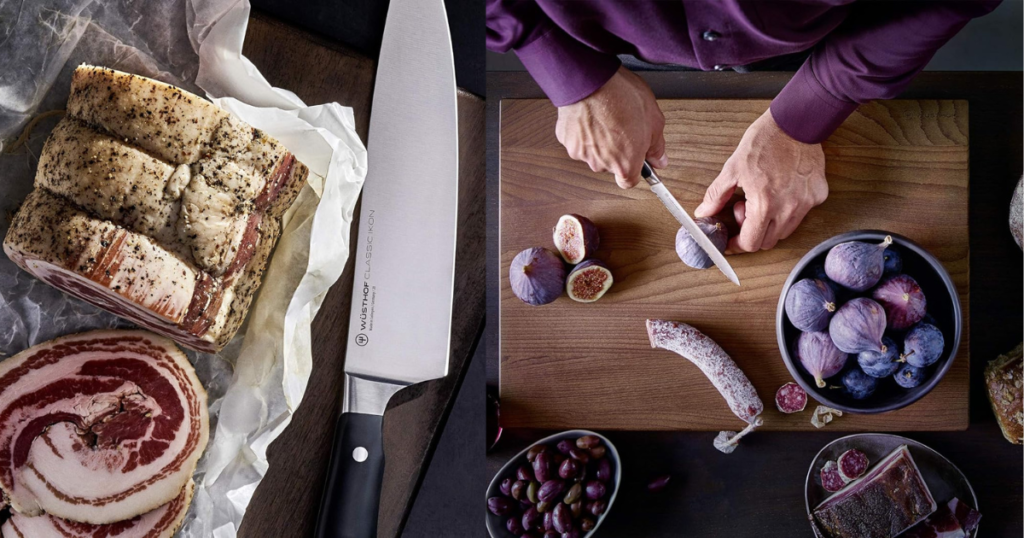
Every chef’s cutting rhythm is different. Some chase precision down to the millimeter, while others need strength and endurance to get through busy prep hours.
That’s why choosing between Japanese and German knives isn’t about which is “better” …it’s about which one works best for you and your kitchen routine.
For Precision Work (Japanese Knives)
If your cooking involves fine slicing, presentation, or delicate ingredients, Japanese knives are your best companions. Their ultra-sharp, thin blades glide effortlessly through vegetables, sushi, or boneless meats. They are known for precision but demand a car.
Best pick: The Shun Classic 8” Chef’s Knife and Miyabi Birchwood SG2 are top examples for chefs who value finesse and control.
For Tough Cuts (German Knives)
German knives are the workhorses of the kitchen. Their sturdy build and slightly heavier weight make them ideal for dense vegetables, poultry, and hard-skinned fruits.
You can chop, slice, and even handle small bones without worrying about damage.
Recommended option: The Wüsthof Classic Ikon 8” Chef’s Knife is perfect for chefs who want durability and comfort in long shifts.
For All-Round Home Use (Hybrid Options)
If you cook a mix of cuisines or want a single knife that balances sharpness with toughness, a hybrid design is your answer.
The Dalstrong Gladiator Series Knife Set blends Japanese-style edges with German-style sturdiness … perfect for beginners or home chefs who do a bit of everything.
Best Knives from Each Tradition
Both Japanese and German knife makers have mastered the art of steel and edge. Below are the top picks that represent each tradition…trusted by professional chefs and home cooks alike for their performance, balance, and craftsmanship.
Our Best Picks for 🇯🇵 Japanese Knives
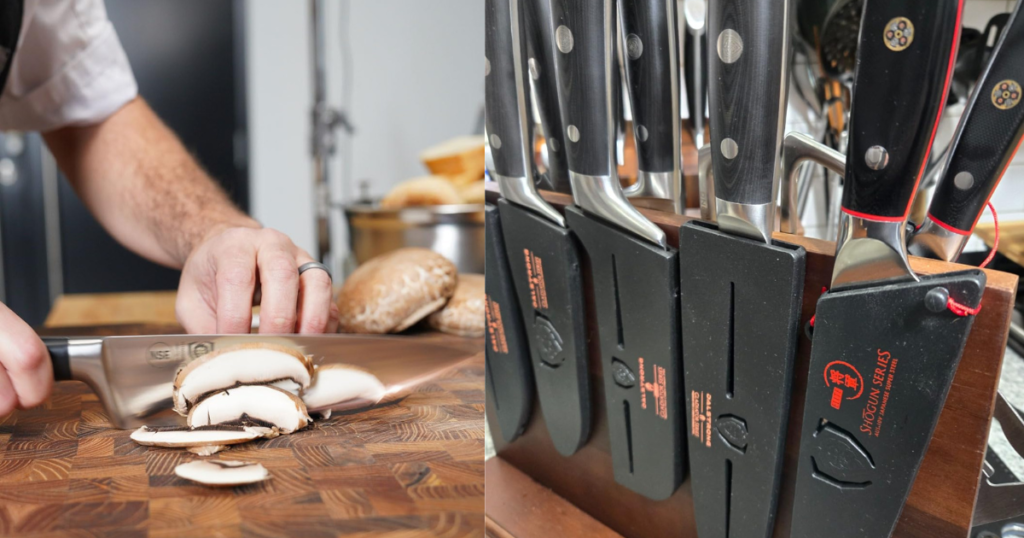
1. Miyabi Birchwood SG2 Chef’s Knife
The Miyabi Birchwood SG2 is a benchmark of Japanese precision and beauty. It’s crafted from SG2 micro-carbide powder steel, known for holding an exceptionally sharp edge over time.
Key features:
- Rockwell hardness of 63, ideal for fine slicing and precision work.
- Birchwood handle with a natural, comfortable grip.
- 1A 01-layer Damascus design that prevents food from sticking.
This knife is built for chefs who demand accuracy and control. The high price reflects its long-term edge retention and craftsmanship, making it a worthy investment for serious cooks.
2. Shun Classic 8” Chef’s Knife
The Shun Classic is a popular choice for those exploring Japanese-style knives for the first time. It features a VG-MAX steel core …an upgrade of VG-10 — wrapped in 34 layers of Damascus steel on each side.
Key features:
- Lightweight and perfectly balanced for push-cutting techniques.
- D-shaped PakkaWood handle for comfort and control.
- Ideal for vegetables, fish, and boneless meats.
It offers a forgiving yet sharp experience, making it an excellent introduction to Japanese craftsmanship.
Our Best Picks for 🇩🇪 German Knives
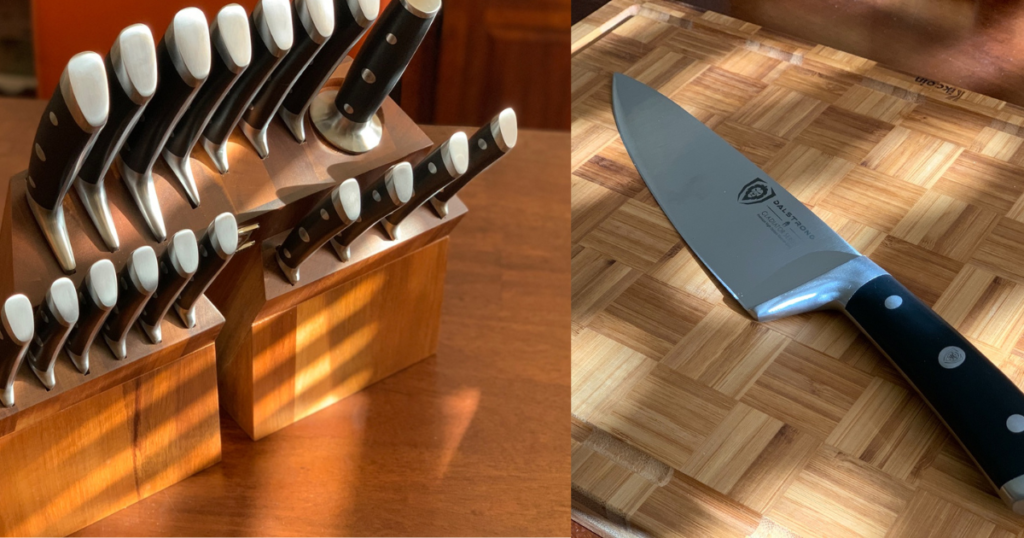
1. Wüsthof Classic Ikon 8” Chef’s Knife
A trusted staple in professional kitchens, the Wüsthof Classic Ikon is built for power and endurance. It’s forged from high-carbon stainless steel and designed to handle tough ingredients with ease.
Key features:
- Full-tang construction for stability and balance.
- Ergonomic polymer handle that reduces fatigue.
- Precision-forged blade with a Rockwell hardness of 58.
This knife excels in everyday heavy-duty prep work and can easily last for decades with proper care.
2. Dalstrong Gladiator Series Knife Set
Dalstrong’s Gladiator Series brings German-inspired strength and design to an affordable, beginner-friendly range.
Key features:
- Made from high-carbon ThyssenKrupp German steel.
- Excellent edge retention and corrosion resistance.
- Sturdy handles that feel balanced and safe for everyday use.
This set is perfect for home cooks who want the durability of German knives without the high cost.
Pro Tip:
To protect your knives and extend their sharpness, always use a quality wood cutting board like the Boos Block. It minimizes edge wear and keeps your blades performing at their best.
Shun vs. Miyabi: Which Japanese Knife Brand Wins?
When it comes to Japanese knife craftsmanship, Shun and Miyabi stand at the top — both combining heritage, steel mastery, and stunning design.
Yet, their approach to performance and feel caters to different kinds of chefs.
Sharpness & Edge Retention
Miyabi knives are made with harder steels like SG2 and MC66, giving them an ultra-fine edge that stays razor-sharp for longer.
They’re ideal for chefs who prize precision and don’t mind extra care.
Shun Classic 8, on the other hand, uses VG-MAX steel …slightly softer but easier to maintain and hone. For regular kitchen use, it offers excellent sharpness without the high maintenance of harder steels.
Comfort & Design
- Shun knives feature ergonomic D-shaped PakkaWood handles that feel natural and balanced in hand, making them comfortable for longer prep sessions.
- Miyabi knives lean more toward artistry …with elegant Birchwood or Micarta handles and intricate Damascus layering. They feel lighter and more agile, perfect for meticulous cuts and visual appeal.
Best For
- Shun: Ideal for home chefs and professionals who prioritize comfort, balance, and everyday practicality.
- Miyabi: Perfect for advanced cooks who value top-tier sharpness, precision, and craftsmanship.
How to Choose the Right Chef’s Knife
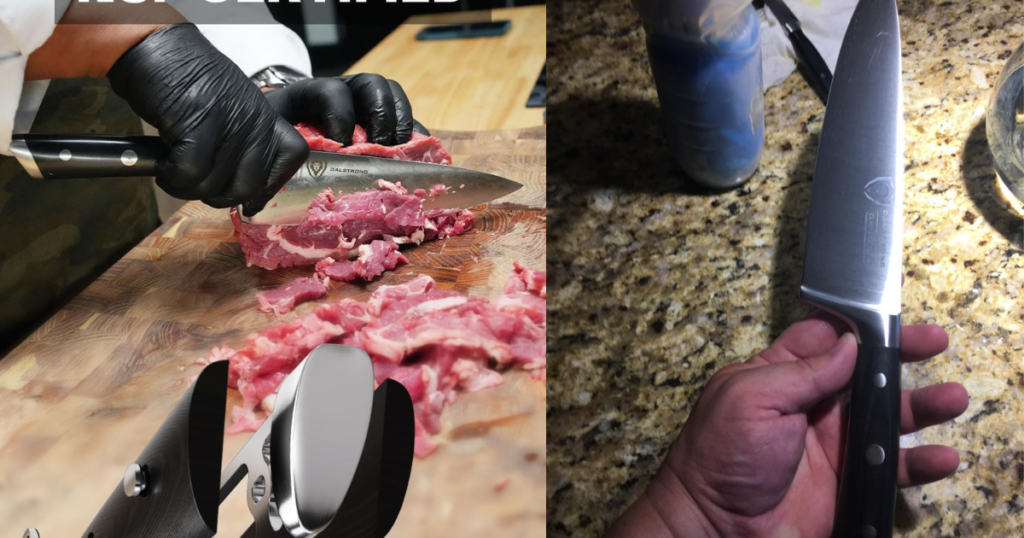
Choosing between Japanese vs German knives isn’t just about design… It’s about how you cook, maintain your tools, and what kind of performance you expect in the kitchen.
The right knife should match your rhythm, not slow it down.
Your Cooking Style
Your cutting technique is the biggest deciding factor. If you focus on precision slicing, gentle push cuts, and clean presentations, Japanese knives fit perfectly. They’re built for accuracy and speed.
If your cooking involves chopping through dense vegetables, poultry, or large prep volumes, German knives offer more control and strength for those heavy tasks.
Maintenance Time
Japanese knives stay sharper for longer but require more care—handwashing, careful storage, and occasional honing.
German knives are more forgiving. They resist chipping and can handle daily use with minimal upkeep.
Budget & Longevity
If you cook often, investing in a premium knife pays off. A Shun or Miyabi can last decades with proper maintenance. For those on a budget, Wüsthof and Dalstrong offer excellent performance at lower prices without compromising quality.
Best Knife for Beginners vs. Pros
- Beginners: Start with a Wüsthof Classic Ikon or Dalstrong Gladiator Series for durability and easy care.
- Pros: Upgrade to a Shun Classic or Miyabi Birchwood SG2 for unmatched sharpness and control.
| Factor | Go Japanese If… | Go German If… |
| Cutting Style | Push cut, precise slicing | Rock cut, versatile motions |
| Durability | You handle light prep | You tackle heavy prep |
| Maintenance | You sharpen often | You prefer low-maintenance tools |
Don’t Forget the Cutting Board
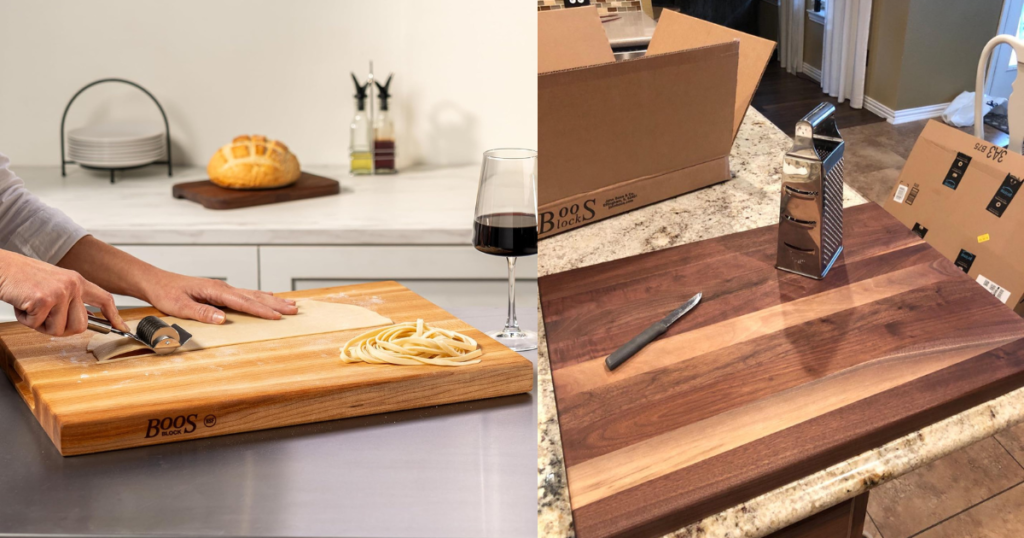
Even the best knife will dull quickly if you use it on the wrong surface. Your cutting board plays a big role in protecting your blades and keeping them sharp for years.
Think of it as your knife’s partner …one can’t perform well without the other.
Why Wood Is Best
A wooden cutting board cushions your knife edge and reduces wear. It also lasts longer, resists deep cuts, and naturally inhibits bacteria. That’s why most professional chefs prefer end-grain or edge-grain wood boards.
Avoid Glass or Plastic
Glass and hard plastic boards might look sleek, but they’re harsh on knife edges. Over time, they cause dulling and even micro-chipping…especially with Japanese knives.
Recommended Board
The Boos Block Cutting Board is a top choice. It’s durable, stable, and easy on both Japanese and German knives. Its anti-slip design and sturdy build make every prep session smoother and safer.
The Knife That Matches Your Rhythm
A knife should never slow you down or fight your flow. Whether you lean toward Japanese precision or German strength, pick the knife that feels intuitive. One smooth cut tells you everything you need to know.
Ready to find yours? Check out in-depth guides and real chef-tested reviews to choose the knife that truly fits your craft.
You Might Have These Question About Japanese Knives vs. German Knives
Japanese knives use harder steel and finer edge angles (around 15° per side), allowing for razor-sharp precision. This makes them excellent for delicate slicing. German knives use softer steel with thicker edges, built for strength and durability over ultimate sharpness.
German knives are easier to maintain because their softer steel tolerates rough use and infrequent sharpening. Japanese knives require more care — regular honing, gentle cleaning, and proper storage — to preserve their thin, hard, and ultra-sharp edges.
Yes, but they require mindful use. Beginners who value precision and careful prep will love them. However, if you tend to chop quickly or on tough surfaces, start with a German knife — it’s more forgiving and easier to maintain.
For home use, sharpen every 3–6 months, depending on frequency and cutting habits. Professionals should sharpen more often. Regular honing between sharpening sessions keeps the edge aligned and extends blade life.
Professionals often prefer Japanese knives for fine control and precision tasks. Home cooks benefit from German knives’ toughness and versatility. Both can perform well if matched to your cooking style and comfort level.
A quality wood board, such as the Boos Block Cutting Board, is ideal. It cushions the blade, minimizes dulling, and resists bacteria. Avoid glass or hard plastic boards — they quickly damage even the best knife edges.


